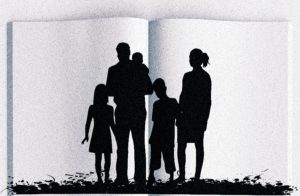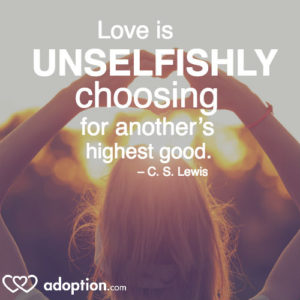May 15, 2019
The Story of You Before Us
History for an adopted child is an interesting concept. Like anyone else, they have a history, but it is documented differently. They may never see photos from their birth parent’s childhood or what their birth grandparents look like. They may have siblings they don’t know, or don’t know how to contact. It changes what they have to reflect on as they age, because it’s quite possible that the only history they’ll ever know begins with you.
So how do you create that?
Take (and keep!) photographs. Make a conscious effort to photograph moments in their lives both major and minor. And not just photos of them, but photos with you, their friends, the family — anyone who is helping build their history post-adoption. This will help them remember the people and places that helped shape their childhood. Maybe it’s their tee ball team or candid photos of them playing with the neighbors — all of these experiences will play a part in their history.
Keep mementos from many places. Don’t just collect interesting pieces from their childhood, save relics from your childhood and your parent’s childhood as well. By keeping these pieces and mementos, you are helping them create their own history. Much like a lot of people, it may not mean anything to them when they’re five years old, but when they’re 45 and explaining how they grew up to their children, a family keepsake means the world.
Ask them what they want to know about their history! Make it a conversation, exchange dialogue. Together, you and your child can make a Lifebook. A Lifebook is an important tool in an adopted child’s life because it allows them a connection to their past through their own eyes. It is part scrapbook and part memory book and they are uniquely individual. This book is a great way to get the conversation started — you can begin with basic information and then weave your way into memories and special moments.
Talk about the tough stuff. Tough histories are not just limited to adopted children. Everyone has had to endure something difficult throughout their lives. It’s important to discuss the tough stuff, and that includes a child’s family history. Some adopted children come from traumatic backgrounds, so how do we talk about that? Make sure your child knows that they, and everyone, are more than the hard parts in their history. They are not doomed to their past. Their potential is infinite.
Engage their birth family’s history as much as possible. Weave it into the history they share with you — the two don’t need to be separated, they are both deeply important to who your child is and how they see and experience the world. If you have a more open relationship with your child’s birth parents, bring them into the conversation when it’s appropriate. It is not about breaking your child’s history into two separate spaces, it’s about finding ways to blend the history together and allow your child to create their own identity based on that.
Image via: modernheirloombooks.com



